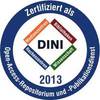Preview |
PDF, English
- main document
Download (8MB) | Lizenz: Rights reserved - Free Access |
Abstract
Designing an algorithm for quantum chemistry for a quantum computer requires a lot more than the pure algorithmic design. Quantum computers, especially the ones that exist at the time of writing, are not perfect and are subject to many limitations in terms of the types and amount of operations that can be done. Due to this it is important to design resource-efficient algorithms and strategies to mitigate the effect of noise. To do the latter it is also important to study what actually is the effect of noise on a computation. Armed with this knowledge it is then possible to tackle the actual implementation of a quantum algorithm on hardware. Quantum chemistry, and specifically chemical dynamics is a particularly exciting canvas upon which to explore the potential of quantum computing. This thesis aims to present the full journey from algorithmic design for chemical problems to their implementation on quantum computers and the extraction of useful values through error mitigation. To achieve this Part I of the work introduces all the context and concepts required to follow the re search presented. The Chapter 1 discusses the reason why one would want to apply quantum computers to problems in general and in chemistry. The Chapter 2 presents the foundational mathematics, quantum theory and high level quantum computing prospects. This allows the third chapter on quantum algorithms, with a focus on the variational quantum eigensolver to be followed. Because quantum algorithms are subject to noise, Chapter 4 introduces the theory and effects of noise and a selection of fundamental techniques used to mitigate noise or correct for errors. Chapter 5 then presents how quantum chemistry is dealt within quantum computing. Part II presents the research and results, beginning with Chapter 6 which presents a quantum algorithm to perform non-adiabatic mixed quantum-classical dynamics with a fixed depth circuit. The Time-Dependent Variational Quantum Propagation (TDVQP) algorithm is then tested on the Shin-Metiu Model, where it achieves promising results as a proof of concept study. However, that study was noiseless, so in anticipation of the inevitable hardware noise, Chapter 7 presents an error mitigation technique called UNIfied Technique for Error mitigation with Data (UNITED) which was tested on both variational and random circuits showing that the combination is better than the parts. To further understand the effect of noise Chapter 8 presents a different approach to the problem; starting with a perfect quantum computer, what happens when noisy qubits are added one at a time? Here it was shown that a single noisy qubit is enough to make the whole machine behave as though it was noisy, although with an exponentially suppressed error rate. Finally, Chapter 9 closes off this section by showing the process of implementing TDVQP on a 4 qubit quantum computer at the Walter Meisner Institute, at the time of writing experimental results were not yet available, but here all the considerations, caveats and compromises required to run on real hardware are shown, as well as the performance of UNITED on this problem. Closing off the work Part III holds the concluding remarks, an outlook to the future of quantum computing and a reflection on the work that was done. Actually computing useful quantum chemistry on quantum computers is a tough business, and perhaps it will require fault-tolerant machines and clever algorithms together, but there are promising attempts at the problem with noisy machines all the same.
| Document type: | Dissertation |
|---|---|
| Supervisor: | Vendrell, Prof. Dr. Oriol |
| Place of Publication: | Heidelberg |
| Date of thesis defense: | 21 March 2025 |
| Date Deposited: | 11 Apr 2025 06:37 |
| Date: | 2025 |
| Faculties / Institutes: | Fakultät für Chemie und Geowissenschaften > Institute of Physical Chemistry |
| DDC-classification: | 500 Natural sciences and mathematics |
| Uncontrolled Keywords: | Quantum Computing, Theoretical Chemistry, Quantum Chemistry, Chemistry, computer science |









